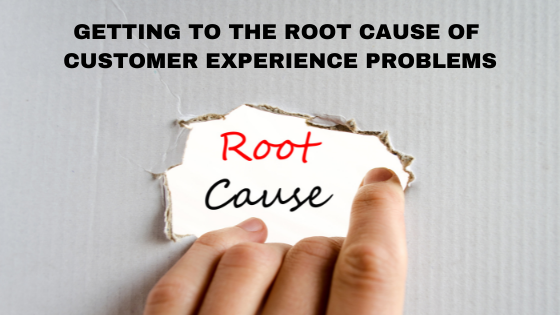Whenever a customer visits, a business has a small window to make a lasting impression that is positive and grand. We’ve had a year and a half of a pandemic that has driven sweeping changes in how customers conduct business and their new expectations around how they want to be treated. We have the pandemic to thank for being a persistently brutal change agent. By now, I would imagine, businesses should have taken the time to reflect, review and renew their service delivery patterns for both in-person, as well as online visits.
Also, by now, businesses should have realized that resolving customers’ issues is an inside job. Whatever is happening on the operational end, has to be fixed if customers have to leave happy. It is unfair to have customer service representatives or call centre agents constantly trying to soothe customer vexation, if the warehouse keeps mixing up customers’ orders, or the service department keeps over-promising and under-delivering on repairs to merchandise. Whilst training is good for engagement, it is powerless in the face of repetitive service failures that are infrastructural in nature and therefore, arguably preventable.
I encounter often, the scenario where clients want customer service training to act as a fixative for the broken relationship with their customers, when the real starting point should be fixing the infrastructural architecture that supports the customer experience chain. Often, the infrastructure is in such disarray, that impairment of the customer experience, is a predictable outcome. One follows the other.
I encounter often, the scenario where clients want customer service training to act as a fixative for the broken relationship with their customers, when the real starting point should be fixing the infrastructural architecture that supports the customer experience chain.
Fixing the inside means that if all of the breakdowns in the service delivery ecosystem are corrected, then the customer contact staff will no longer be hamstrung by “things outside of their control” whenever they are responding to a situation that requires problem-solving. The inside works so well, that the problem can be resolved at the first or second point of contact.
Many years ago, my brother, who was an electrical engineer and responsible for the 24|07 running of a plant at a company that manufactured and repaired aircraft parts, shared the philosophy that governed the plant’s operation with me. He said that their focus was preventative effectiveness over corrective efficiency. I understood his point, since in the aviation industry, failure could be catastrophic to life. Their way of solving their customers’ problems, was to prevent the problems.
Over my years in the consulting industry, the wisdom of that philosophy has stayed with me and notwithstanding the fact that we are speaking about two different industries, if the intention is to aim for a “zero failure” standard, then the philosophy is unquestionable.
Applying “permanent” fixes is a sure-fire way of problem solving, so that when customer contact staff (both human and AI) have to interact with customers, there are no nasty surprises. How many times have we heard the frustrated moans of, “Didn’t we fix this issue some time ago?” The problem of the half-way fix, otherwise known as the “band aid” application, is that it only addresses the situation in a superficial way, wears the problem-solver out and creates embarrassing moments. Especially if the problem is a repeat offender for the same customer.
The problem of the half-way fix, otherwise known as the “band aid” application, is that it only addresses the situation in a superficial way, wears the problem-solver out and creates embarrassing moments. Especially if the problem is a repeat offender for the same customer.
Another underutilized medium for building problem solving expertise from the inside out, is preparing for the unexpected. This means simulating as many “what if” scenarios as possible and having backup plans. If the system goes down, is there a plan for remaining “live” without having to apologize to customers? The days of “I’m sorry, our system is down” are fast approaching their expiry date.
I can’t say enough about the value of spending the time required to fully understand the problem. A cursory glance at a problem only increases the probability of misdiagnosis. A commanding view of the problem, that invites inputs from all players along the value chain, is critical to shaping an efficacious solution. Of course, the first problem to be overcome is the tension that often exists amongst the players on the team regarding, “where the problem started.”
I can’t say enough about the value of spending the time required to fully understand the problem. A cursory glance at a problem only increases the probability of misdiagnosis. A commanding view of the problem, that invites inputs from all players along the value chain, is critical to shaping an efficacious solution.
The landscape of the future will be one where hybrid businesses will be operating in an ecosystem that includes virtual service, self-service and live-service. In such an environment, the future customer will have no tolerance for wasting time on having problems solved. His or her expectation will be that customer concerns will be flagged and resolved before they become problems.
So, as businesses hurtle to a new future with their customers, one strategic question begs itself. “How can a business eliminate any distress that threatens the preservation of customer affection?”
Maybe all a business needs to do is remember the frenzied, early days of the pandemic and use the memory to galvanize action to fix all of its existing service vulnerabilities. Lest lightning strikes twice.

